The Ultimate Guide and Best Tips for Beginners
Capturing the perfect photograph of your unsettling dog can be next to impossible with the tail wagging, constant movement, and continuous distractions. I’ve been photographing my own dogs and those of strangers for a few years now, and today I endeavor to improve your dog photography skills with this extensive dog photography guide for beginners.
Before You Delve into Dog Photography
Before you delve into dog photography, let’s establish the reason for why you want to take the photos of dogs, and whether it’s something you want to pursue as a real hobby or maybe even a career choice.
Three most common reasons people may delve actively into dog photography are:
- To capture specific moments with their dog(s) in time
- To create a popular doggy Instagram page and gain followers
- To help organizations (or friends) with promoting dog adoption
- To earn some money by doing professional looking dog portrait photography
- To establish their pet as social media superstars (and earn money that way)
Every one of these reasons will have their own set path, so let’s briefly cover them.
1. Capturing Moments in Time
Just your good old regular photographs. You want these photos with your dog(s) or of your dog(s) to reflect life in the moment rather than appear to be posed for and staged. For example, a photo of your Fido napping in their favorite spot or a game of Frisbee at the park.
It may look something like this:

This is a photograph that should invoke memories and the best way to capture this in a single still photo is to shoot a series of photographs while making yourself blend into the background so that you don’t influence your pet subject.
2. Dog Rescue Work
Although some animal rescue organizations will request staged portrait photos to add appeal to their adoptable dogs, rescue work photos are usually a midway point between a candid photograph and a portrait photograph.
It’s likely to look like this (@strayfromtheheart):
Your focus for this type of dog photography should be capturing your subject in their best light while also capturing their personality. Adopters want to see their potential new friend’s features, but they also want to know that the dog in question is capable of “being a dog”. Where candid photography shows the “now”, this type of photograph should be a combination of the “now” and potential for the future.
It’s important to achieve a balance between posing and candid dog photos when doing rescue work photography. If you find this difficult to begin with, try holding a candid and a posed photo sitting and choosing a few photos from each. With some practice, you will be able to shoot candid and posed photos in a single shoot.
3. Dog Portrait Work (or Pro Dog Photography)
Dog portrait photography is more about capturing the subject rather than capturing an event, a specific moment in time, or projecting potential.
Portraits of dogs are posed pictures that should be shot with optimal lighting and look professional. They can be shot using props, and should always make use of a background that does not outshine your subject.
Here’s what this may look like (@clickpets):
Many times, portrait dog photography is done in a photography studio where all aspects of the photo can be tightly controlled and manipulated. That said, portraits don’t have to be set in a sterile studio atmosphere so long as they prioritize and capture the personality of the subject.
Pet portrait photography is perhaps the most difficult type of photography when it comes to dogs because it requires your subject to remain still and posed. It also requires the most retouching, most tools, a very controlled environment and good photography skills. This is what professional dog photographers usually do and how they earn a living.
Working with Your Dog

The first thing to keep in mind when delving into dog photography and taking photos of pets is that unless there is something “in it” for your dog, you’re going to have a hard time getting any quality photos. Fortunately, most dogs are food-driven, which means that you can use dog treats to persuade your portrait subjects to sit and wait quite easily.
While you can bribe your dog to sit for treats, don’t expect them to sit for long. Dogs have much shorter attention spans than humans which means that you’d better have everything ready to go before you put that dog in a posed position.
That short attention span also means that you can’t expect your dog to sit for a pose after a pose even if there are treats involved. Dogs don’t like to hold poses and you need to take this into consideration when setting up your photo-shoot, meaning you’ll have to work fast.
Preparation and planning is also key. Try to build in breaks between shoots, some playtime with the dog, time for a few minutes of fresh air, time to give your pet some belly rubs to keep them calm – anything that provides a break in the monotony and allows your dog to be active.
Even with the right dog training treats in hand and proper break times built into your dog photography shoot, your pooch is going to tire of “performing” for you. In some instances, they may tire before you’ve even begun!
If you notice signs that your dog is simply not interested in posing or having their photo taken, put away your camera and try again another day when your pet is more engaged and compliant. Forcing photos when your dog is simply not “in the mood” will result in poor photos and a wasted time.
Your Basic Dog Photography Equipment (Cheap)
While you can take great quality photos of your dog with a phone camera, and even make them look professional, no phone can match the results you can achieve even with a cheap and simple digital camera setup. If you know that you’d like to try dog photography as a hobby and don’t mind a little investment, here’s the very bare-bones dog photography equipment setup you’ll need and can find for relatively cheap.
For the very basic and affordable setup, you’ll only need a few items:
- Camera
- Lens(es)
- Lighting setup
With this setup, some creativity and photography skills, you can take incredible photos of your dog that you’d be proud to share on Instagram, or even sell.
The Digital Camera
While you may begin with dog photography basics by shooting photos with your smartphone and applying filters like any real Instagramer would, the true photographer must invest in at least medium quality digital camera. Smartphone cameras offer great resolution, but they are limited in the photography-related features that they offer. More importantly, you can’t pair the phone with some photography equipment you’ll need for great quality photographs of pets.
When choosing a digital camera (DSLR) for pet photography, take a few things into consideration.
Get a Camera That Suits Your Experience Level
If you are truly a newcomer to dog photography (or photography in general), you don’t want to get in over your head and select a camera that is designed for expert photographers because it may end up a waste of money, and it will be more difficult to learn. Choose a digital camera that is amenable to “beginners” and work up from there.
The most recommended cheap DSLR camera for the beginners right now is the Nikon D3400 because it’s very user-friendly, easy to use and learn. This camera incorporates professional must-haves without all of the “extra” features that you don’t need in the beginning while you’re learning about how to frame, how to light, how to position a dog and other basic aspects of photography itself (and not the equipment).
Different Uses of Your Camera
Think about what types of photographs you will be taking most often – this will influence which type of camera will work best for you and your dog photography style.
For example, are you constantly on the go and looking to capture candid photographs (the run-and-gun type of dog photography)? If so, consider a more compact camera option like the Sony Cyber-shot RX100 V (or a more expensive compact alternative with fancier features like Sony Cyber-shot RX10 IV).
If you decide to go with dog portrait photography in a controlled environment, and looking for a DSLR camera better suited to studio photography and higher quality photographs, you won’t go wrong with the above mentioned budget camera like Nikon D3400 or Canon EOS Rebel T7i. Both of these are the most affordable in that category and best rated in terms of value for the price.
Need a more affordable alternative to the DSLR camera that offers professional quality? Try a bridge camera like the older version of Sony Cyber-shot RX100 or it’s close cheaper competitor Panasonic Lumix ZS50 – both of them are similar, but just remember that you’re not going to get the same caliber of camera for your buck as you would with the DSLR. It’s great for capturing your dog in the moment.
For something a little different, such as shooting photos of your dog in the water instead of dry land, which is popular right now, consider a waterproof camera like the Olympus TG-5, but remember that this is a specialty camera and will not provide optimal quality dog photography in all situations and is mostly to be used for its waterproof feature.
Looking to expand on your repertoire and include some video capabilities, try filming your dog instead of just taking photographs? The cheapest and best price-for-value camera you can get is a DSLM (a mirrorless camera). The most recommended budget DSLM with a 4K video recording function is the Panasonic Lumix G7 (the absolute winner in the category for this price), or a more expensive Panasonic Lumix GH5 camera.
Camera Lenses
There is an endless range of lenses that can attach to your digital camera to enhance dog photography. As with cameras, the lenses you should invest in depends on the type of photography you will be focusing on, but in some ways, they are more important and valuable than the camera itself.
There are two classes of camera lens you’ll need to know about to start with – a prime lens and a zoom lens. I’ll explain this briefly without getting too nerdy on the subject.
Prime Lens
A prime lens incorporates more brightness into your photograph rather than focusing on zooming in as close as possible on a subject. This may or may not be a cheaper lens option with a fixed focal length that excels at capturing sharp photos with wide angles, fast-moving subjects, and great for use under low light situations.
There are five types of prime lens you need to know:
- The standard lens captures images exactly as you see them through the human eye.
- The wide-angle lens takes a broader photograph and is best for landscape or large group photos.
- The fish-eye lens combines a spherical perspective with a panoramic effect. While popular in real estate photography, this isn’t commonly used in pet photography.
- The telephoto lens maintains the same view of an image but brings it closer.
- The super telephoto lens works the same way as a telephoto lens but works best for much longer distances.
Zoom Lens
A zoom lens is best for shooting photographs from a distance when you prefer to zoom in rather than physically get closer to the subject. Rather than shooting quickly, this type of lens focuses on stabilization of the image. Again, depending on the camera and the lens itself, it may be a more expensive lens. The zoom lens has variable focal length and is ideal for still life photography, but doesn’t have some of the pros of Prime lens.
There are two types of zoom lens you should know:
- The digital zoom lens crops the image you see to a smaller size and resizes that cropped version to fit the frame making the subject seem closer.
- The optical zoom lens increases magnification by changing the focal length making the subject seem closer.
Lighting
Lighting is something beginning photographers rarely consider. Only after taking a few hundred shots do they see that something isn’t right with those photographs, and it’s usually the proper lighting. There are plenty of things to consider when it comes to dog photography lighting including the direction of light, the type of light, and the temperature of light being used as well as the lighting equipment you’ll use. This is particularly important when photographing dogs. I’m not going delve deep into the equipment, because even the cheap and basic lighting setup like this can be enough for a beginner.
Light Direction/Position
Front Lighting is lighting placed directly in front of your dog highlights detail by casting shadows behind the pet. This type of lighting is easy for the beginner to use but it can create a two-dimensional photograph.
Side lighting helps to add depth to a photo and will make your dog stand out more in the picture, but it requires more knowledge of light itself, the technique and how to use shadows creatively and to your advantage.
Backlighting is the most difficult type of lighting to master because when done incorrectly it will create nothing more than a silhouette of a dog (unless that’s what you want). Done correctly, though, backlighting can create unique dimension and make your doggy photo stand out and look incredibly unique, but this requires more knowledge of your camera to manually overriding exposure settings and good skills of positioning the light source.
The Type of Light
Hard light creates more depth to a photograph of your dog by creating darker contrast in shadows where soft light creates a smoother transition between dark and light. Where hard light is more dramatic and can be great for close up or wider shots, soft light is a better choice for full doggy portraits, for example, since it does not create deep shadows on the features.
Hard and soft lighting can be changed by altering the distance of a light, using a lower wattage bulb, offsetting your light temperature (see the following section), or by using filters or other accessories to disperse or focus your lighting.
Light Temperature
Light bulb color, light filters, and the time of day can all influence the color of light when you are shooting a photograph, but so too can your camera settings.
Your camera has a “white balance” function that automatically adjusts color contrast to make white appear white, but manually overriding this function on your camera will allow you to create cooler or warmer lighting effects. Adjusting your balance to a bluer shade, for example, will create a cooler photograph and adjusting it to a more orange shade will create a warmer appearance.
Miscellaneous Items
When taking photographs of your dog you will need a few things on hand in addition to your camera and lighting equipment, namely, dog treats! Keep plenty of treats and toys and other engaging stimuli on hand to hold your dog’s attention while taking their photograph. Giving your dog treat and toy breaks will be key to successful photoshoots.
You will also want to have props handy if you are staging a scene in a studio environment, and you browse some examples of good dog photography, you’ll see that it’s common. Props can range from something as simple as a dog basket to a bowtie and a top hat. It adds some context to the picture.
The Dog Photography Basics
Now you’ve got the camera, a lens or two, and some lighting equipment. You know that you’ll be shooting either indoors in a controlled environment, or outdoors with some run-and-gun moments. Here are some dog photography basics to keep in mind that are related specifically to what every photographer (pets or other subjects) knows. I recommend searching these terms online for some more information, as knowing how to control this will allow for much better dog photos.
ISO
ISO refers to how sensitive your camera is to light. The lower the ISO, the less sensitive your image sensor is to light, and the grain of your photo will be finer. Higher ISO is better in low light situations, but too high and your photo may become too “noisy”.
Aperture
Aperture measures how much light is let in through the diaphragm of your camera lens. The higher the number, the smaller the aperture opening, and the less light is permitted through the camera lens. A higher aperture creates more depth to an image, but it also means that the shutter of your camera has to stay open for longer because less light is coming in through the lens.
A large aperture or smaller number setting is a good way to focus on a single subject like your dog where a small aperture or larger number setting is better for a photo focusing on scenery that relies on more depth (but can still be used effectively in dog photography).
Shutter Speed
Shutter speed refers to the length of time that the camera shutter stays open to allow light in through the camera sensor. This influences how bright your photo is and can create a freeze or blurring of action shots such as your dog catching Frisbee.
A long shutter speed allows more light in making a brighter photo, but it also creates a motion blur if your pooch is moving fast. A great example of the use of long shutter speed is a photo of a dog jumping to catch a Frisbee in the air where the jumping dog is blurred to show movement.
A fast shutter speed allows less light in making a darker photo but allows you to capture fast-moving objects without a motion blur. A great example of the use of short shutter speed would be capturing a photo of water droplets on a dog’s mouth after they finish drinking.
Exposure
This is how bright your photograph is. Exposure is a direct result of your shutter speed but is also influenced by the aperture and ISO settings of your camera.
The Dog Photography Composition
Equipment and terminology of its use are all fine and good, but for your dog photography sessions to result in amazing photos you’re proud to share on Instagram or even start selling to people as a service, you’ll need to have a trained “photographer’s eye,” which means having an understanding of composition, framing and what makes the photo actually look attractive and/or interesting to a human’s eye.
I recommend reading the book “A Photographer’s Eye” for more tips on this (personally, this book is responsible for making my dog photography skills significantly better). But if you’re not up for a read, here are the very basics you should consider for good dog photos:
The Rule of Thirds
The “Rule of Thirds” is a concept in photography and painting that helps to balance the composition of an image. To do this, imagine a grid of nine squares over the image you are photographing. Now balance the image by placing points of interest within these squares so that they are balanced vertically and horizontally.
For example, a photo of your dog at the beach may focus on the horizon in the top third of the image, the ocean in the middle third and the sand in the bottom third. You may then want to line up your dog in the middle square of the bottom third to balance the composition.
You don’t always have to abide by the “Rule of Thirds” but it’s a great way to get started if you’re having trouble with composition, and this is what will set you up for becoming more successful with dog photography in general.
Perspective
Perspective makes a dog photograph more interesting to the eye. You can alter perspective by changing the vantage point or angle, altering your viewpoint, getting closer or further from the dog or shooting through another item when taking photos of your pooch.
Background Composition
The background composition of your pet photographs has a significant impact on the final image. For example, taking a photograph where you want to focus on your dog, you don’t want to have a background that is concentrated and just too busy to take attention away from your Fido. Instead, you want the background of your image to be blurred or simple so that the eye is drawn to your dog as the primary subject.
Framing Your Dog
Framing is a technique used to draw the eye to the subject of a photograph, and in this case, your pooch. The best example of this would be to take a photograph of your dog in their doghouse using the door of the house to frame your dog’s image. The shape of the doghouse doorway draws your eye to the image of your dog. Conversely, if your dog was simply laying in your front yard, there would be no “frame” around the image and your eye would be attracted to various points of the photograph.
Close-Ups Vs. Zoom
Using close-ups and zoom are both techniques that can influence the composition and appearance of your photo, but which should you use when? Above in this dog photography guide we talked about Prime and Zoom lenses, and this is one of the many cases where it matters which lens you use.
A zoom lens works to make a subject appear closer than it is. For example, if your dog is playing at the dog park five feet from you, you can bring that picture closer using a zoom lens (instead of physically coming closer to the dog).
Close-ups or “macro” settings are used to create an extreme focus on images without bringing them closer to you. For example, if your dog is sitting beside you and you want a photo that captures the print of the dog’s nose, a macro setting would be better for the job than using a zoom lens.
Cropping
Cropping is another method of optimizing the composition of your doggy photograph. Cropping can be done by using the camera lens to crop and focus on only part of your Fido or you can crop a full image after shooting the dog by using photo editing software.
When cropping your images, you need to make sure that your picture composition is balanced and that your dog is well framed. For example, when taking a photo of your Fido eating a treat you may want to crop the image to focus on his head and shoulders. What you don’t want to do is crop the image to awkwardly cut off your dog’s ears, the bottom of their jaw, or sides of their face to create an abnormally shaped head.
Although cropping is a technique that you can focus through practice, it is also something that your eye will naturally recognize. Whether it’s dog photography or any other type, when a photograph is cropped incorrectly, you will almost always be able to tell just by looking at it. It stands out.

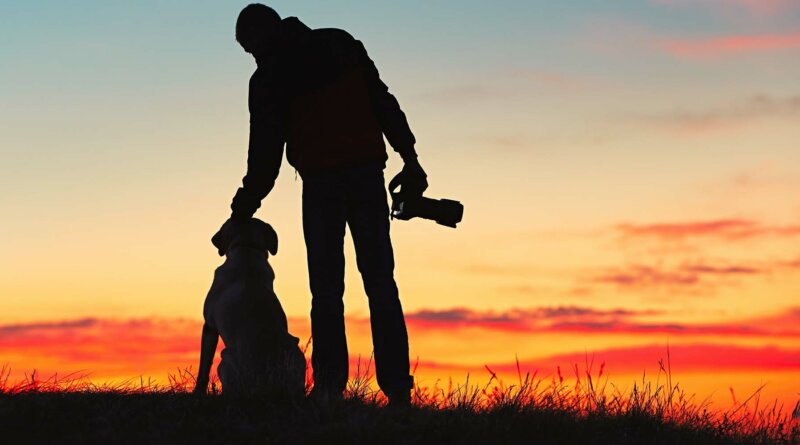



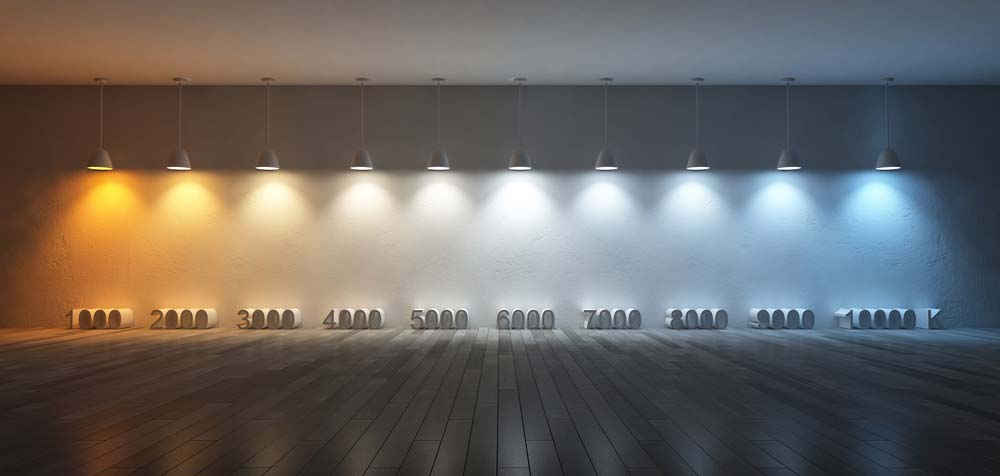
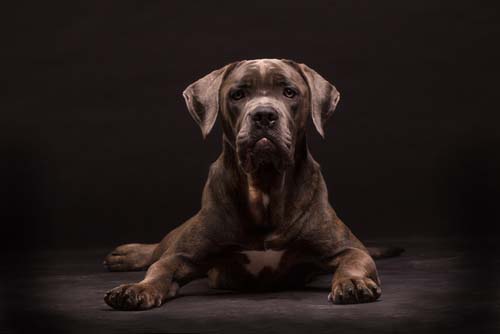


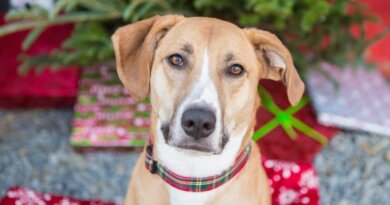
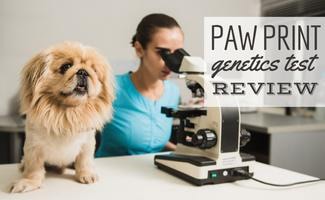
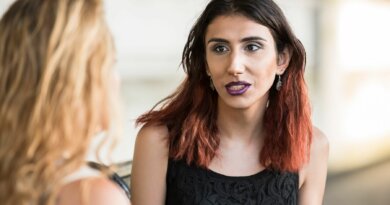
Nicely put, Thank you.
can you write my essay for me write my paper for me please website writes essays for you
Cheers. I appreciate this.
custom essay for sale essays for sale online
Incredible a lot of terrific material.
who can write my research paper for me what should i write my personal essay about help me write a resume for free
Amazing posts. Many thanks!
good online casino online casino software providers baccarat casino online
dark web market list deep web markets
Thanks a lot! Ample tips.
writing a narrative essay mba essay writing service writing a reflective essay
Thanks! Helpful stuff.
same day essay writing service best paper writing service reviews linkedin profile writing service reviews uk
Amazing many of valuable facts.
best resume writing service 2020 cheap reliable essay writing service easy essay writing
Thanks. Numerous facts.
[url=https://domyhomeworkformecheap.com/]online coursework[/url] do my finance homework [url=https://domycollegehomeworkforme.com/]do my homework for me[/url] hire someone to do my homework
Terrific info, Thanks.
[url=https://theessayswriters.com/]essay writer no plagiarism[/url] writing essays for money [url=https://bestcheapessaywriters.com/]essay writter[/url] write paper for me
You actually stated this well.
trustworthy essay writing services choosing a resume writing service essay writing services
Amazing write ups. Thanks a lot!
[url=https://essaywritingservicelinked.com/]essay writing services[/url] essay writing service reddit [url=https://essaywritingservicetop.com/]cheap essay writing service uk[/url] research paper writing services
You actually reported that effectively!
same day essay writing service best man speech writing service uk essay writing service vancouver
You said it adequately.!
essay writting service student room essay writing service which essay writing service is the best in uk
With thanks! Useful information.
tripadvisor review writing service professional resume writing service in pittsburgh pa writing a cleaning service proposal
Thank you. I value this!
us dissertation writing service writing help service essay writing service co uk review
You actually said this superbly!
professional cv writing service custom essay writing service uk credible essay writing services
Information well considered!.
writing service essay joint service writing manual pdf fast essay writing service
Beneficial posts. Kudos!
engineering thesis writing service essay paper writing services master thesis writing service
Terrific postings. With thanks!
smart essay writing service homework writing help service low price essay writing service
Wow loads of great info!
writing essays services truth about essay writing services last minute paper writing service
Cheers. I value this!
essay writing service fast best online resume writing service resume writing service santa rosa ca
You’ve made the point!
professional will writing service coop will writing service coursework writing service
Cheers. I enjoy it.
phd writing service uk essay help service joint service writing manual pdf
Reliable material. Kudos.
best will writing service poem writing service what is the best essay writing service uk
You have made your point pretty effectively!!
personal statement essay writing service best resume writing service for engineers grad school essay writing service
After I originally left a comment I seem to have clicked the -Notify me when new comments are added- checkbox and from now on whenever a comment is added
I recieve 4 emails with the same comment. Perhaps there
is a way you can remove me from that service? Thank you!
Appreciating the dedication you put into your blog and in depth information you offer.
It’s great to come across a blog every once in a while that isn’t the same
outdated rehashed information. Excellent read!
I’ve bookmarked your site and I’m adding your RSS feeds to
my Google account.
Hello, after reading this awesome paragraph i am as well cheerful to share
my know-how here with mates.
Oh my goodness! Impressive article dude! Many
thanks, However I am experiencing difficulties with your RSS.
I don’t know why I am unable to join it. Is there anyone else having the same RSS problems?
Anyone who knows the solution can you kindly respond?
Thanks!!
Thanks for one’s marvelous posting! I really enjoyed reading it, you might be a great author.I will make certain to bookmark
your blog and will often come back from now on. I want to encourage yourself to continue your great job, have a nice
evening!
Simply wish to say your article is as astonishing.
The clarity to your submit is simply cool
and i could assume you’re knowledgeable in this subject.
Fine together with your permission let me to take hold
of your RSS feed to stay up to date with impending post.
Thanks 1,000,000 and please continue the gratifying work.
Thankfulness to my father who told me concerning this
blog, this website is actually amazing.
Excellent blog here! Also your website loads up fast! What web host are you using?
Can I get your affiliate link to your host? I wish my website loaded up as fast as yours
lol
I do not even understand how I finished up right here, but
I assumed this submit was once great. I don’t realize who you might be however definitely
you are going to a famous blogger in the event you aren’t already.
Cheers!
Hello there, just became aware of your blog through
Google, and found that it’s really informative. I am gonna watch out for
brussels. I will be grateful if you continue this in future.
Lots of people will be benefited from your writing.
Cheers!
This design is spectacular! You definitely know how to keep a reader amused.
Between your wit and your videos, I was almost moved
to start my own blog (well, almost…HaHa!) Wonderful job.
I really enjoyed what you had to say, and more
than that, how you presented it. Too cool!
Your way of explaining all in this piece of writing is in fact nice, every one be able to simply be aware of it, Thanks a lot.
Excellent post. Keep writing such kind of information on your blog.
Im really impressed by your blog.
Hi there, You have performed a great job. I’ll definitely digg it and in my opinion suggest to my friends.
I’m sure they’ll be benefited from this web site.
Every weekend i used to pay a visit this web page, for the reason that i wish for
enjoyment, for the reason that this this web site conations actually fastidious funny material too.
Hey terrific website! Does running a blog similar to this take a massive amount
work? I’ve virtually no expertise in programming but I was
hoping to start my own blog in the near future.
Anyways, if you have any suggestions or techniques for new blog owners please share.
I understand this is off topic nevertheless I simply
wanted to ask. Kudos!
wonderful points altogether, you simply won a new reader.
What would you recommend in regards to your publish that you made some days in the past?
Any positive?
I always used to read article in news papers
but now as I am a user of internet so from
now I am using net for articles or reviews, thanks to web.
Asking questions are in fact pleasant thing
if you are not understanding anything entirely, except this piece of writing provides fastidious
understanding yet.
If some one needs to be updated with latest technologies therefore he must be pay a visit this site and be up to date daily.
Really no matter if someone doesn’t be aware of afterward its up to
other people that they will assist, so here it takes place.
You could certainly see your enthusiasm within the article you write.
The sector hopes for even more passionate writers like you who
are not afraid to mention how they believe. At all times follow your heart.
Every weekend i used to pay a visit this
website, as i wish for enjoyment, for the reason that this this website conations actually nice funny material too.
Your means of describing everything in this post is truly nice, all be
able to easily be aware of it, Thanks a lot.
This is my first time pay a visit at here and i am truly impressed to read
all at single place.
I’m gone to say to my little brother, that he should also
pay a quick visit this website on regular basis to take updated from latest news.
Hello, its good post about media print, we all be aware of
media is a fantastic source of facts.
Wonderful goods from you, man. I’ve be mindful your stuff previous to and
you’re just too magnificent. I really like what you’ve acquired right
here, certainly like what you are saying and the best way by which you say it.
You are making it enjoyable and you continue to care for to keep it smart.
I can’t wait to learn much more from you. That is really a terrific web site.
Hurrah, that’s what I was seeking for, what a stuff!
existing here at this website, thanks admin of this web site.
This piece of writing is really a pleasant
one it helps new net visitors, who are wishing for blogging.
If you desire to obtain a great deal from this post then you have to apply these techniques to your won weblog.
If you want to increase your knowledge only keep visiting this site and be updated with the latest news posted here.
Thankfulness to my father who told me about this webpage, this blog is actually
remarkable.
Hi there, every time i used to check webpage posts here
in the early hours in the break of day, as i like to
learn more and more.
Pretty nice post. I just stumbled upon your weblog and wished to
say that I have really enjoyed surfing around your blog
posts. In any case I will be subscribing to your rss feed and I hope
you write again soon!
Hello friends, how is everything, and what you would like
to say on the topic of this post, in my view its really remarkable in support of me.
Трехфазный стабилизатор переменного напряжения “Штиль” R 3600-3 является одним из линейки стабилизаторов напряжения “Штиль” серии R. Стабилизатор R 3600-3 имеет два выхода для подключения нагрузки — с автоматическим отключением нагрузки при пропадании напряжения в одной из фаз и без него. Конструктивно стабилизатор напряжения “Штиль” R 3600-3 выполнен в виде подвесного моноблока с табло индикации и автоматическим выключателем сети на передней панели и клеммными колодками для подключения сетевого и нагрузочного кабелей — на задней.
стабилизаторы напряжения http://stabrov.ru.